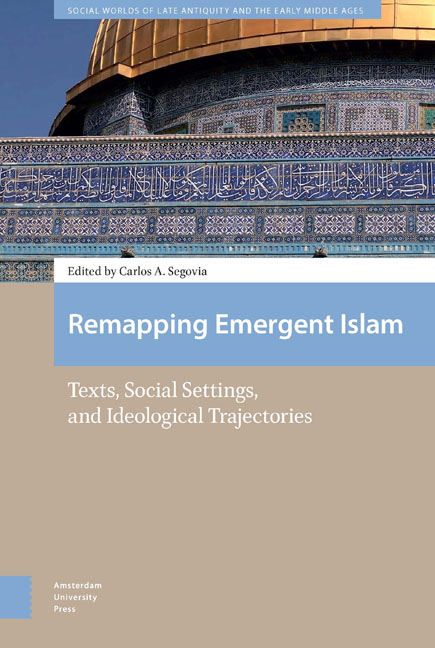Book contents
- Frontmatter
- Contents
- Introduction
- Part 1 Re-Assessing the Hypothesis of a Peripheral Jewish Background
- Part 2 An Encrypted Manichaean / Messalian Matrix?
- Part 3 Measuring the World’s Timeline… and Imagining the Afterlife at the Persian Court?
- Part 4 Conceptual Quicksand, Meta-Narratives of Identity, Texts and their Marginalia
Introduction
Published online by Cambridge University Press: 24 November 2020
- Frontmatter
- Contents
- Introduction
- Part 1 Re-Assessing the Hypothesis of a Peripheral Jewish Background
- Part 2 An Encrypted Manichaean / Messalian Matrix?
- Part 3 Measuring the World’s Timeline… and Imagining the Afterlife at the Persian Court?
- Part 4 Conceptual Quicksand, Meta-Narratives of Identity, Texts and their Marginalia
Summary
This multidisciplinary volume aims at moving forward the scholarly discussion on Islam's origins by paying attention to three domains – textual, social, and ideological – whose intersections need to be examined afresh to get a more-or-less clear picture of the concurrent phenomena that made possible the emergence of a new religious identity and the progressive delimitation of its initially fuzzy boundaries. It therefore deals with the renewed analysis of a number of key texts, social contexts, and ideological developments relevant for the study of Islam's beginnings – taking the latter expression in its broadest possible sense. More specifically, the essays in this volume explore: (1) the multi-vectorised socio-cultural milieux in which the early quranic movement might have gradually taken shape, as well as their multi-layered ideological frameworks, which are the subject of chapters 1–4; and (2) the various ways in which its identity was measured, narrated, and encrypted – i.e. directly or indirectly thematised – within and beyond the Qur’ān itself, on which, in turn, chapters 5–9 offer renewed insights.
No unifying pattern in terms of methodology and style has been imposed on the authors’ creativity. Intentionally. For selecting different accoutrements when disembarking on a continent still lacking any precise cartography risks different perceptions of its landscape, which cannot be totalised beforehand. Furthermore, the pretension that such cartography exists, and that such totality must be taken for granted at the very outset of the exploration, is what this volume would like to question.
Thus in Chapter 1, ‘South Arabian “Judaism”, Ḥimyarite RaḤmanism, and the Origins of Islam’, Aaron W. Hughes explores the social and religious settings of South Arabia at the advent of Islam. Rather than assume that the ‘Jews’ of Ḥimyar (present-day Yemen) were religiously normative (as scholars like Glen W. Bowersock do), Hughes works on the assumption that they were not. Who, to use but one example, were the Ḥimyarite Raḥmanists of South Arabia? Were they ‘Jewish’, ‘Christian’, or some combination thereof? This fluidity of religious forms and identities – argues Hughes – means that boundaries amongst Arabian Christianity, Judaism, and what would emerge as Islam were often ambiguous. And yet this ambiguity – he adds – does not mean that there were not distinct Christianising and Judaising tendencies, given the lengthy history of these two religious traditions in the area.
- Type
- Chapter
- Information
- Remapping Emergent IslamTexts, Social Settings, and Ideological Trajectories, pp. 7 - 12Publisher: Amsterdam University PressPrint publication year: 2020

